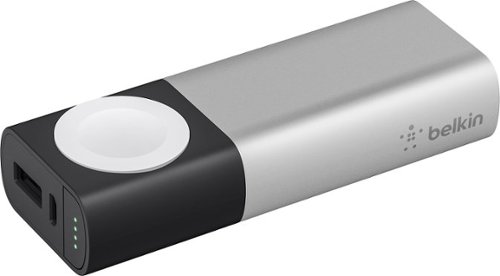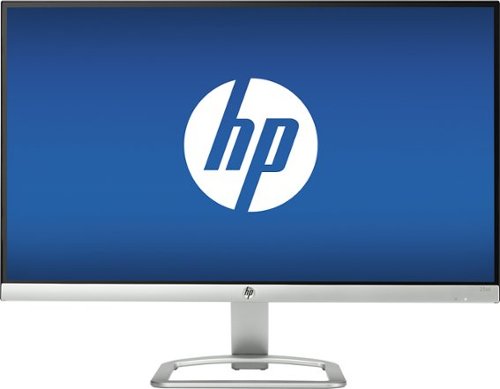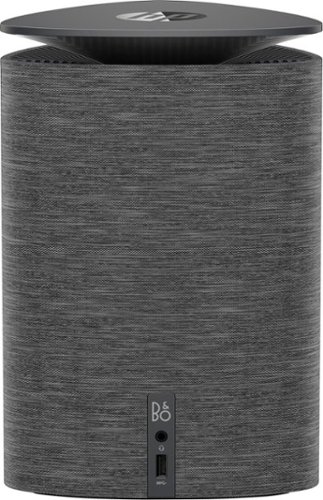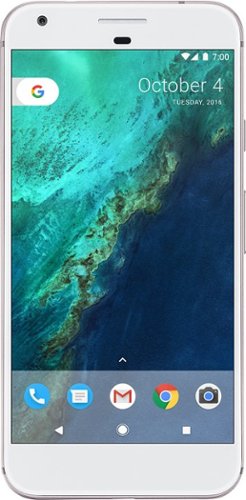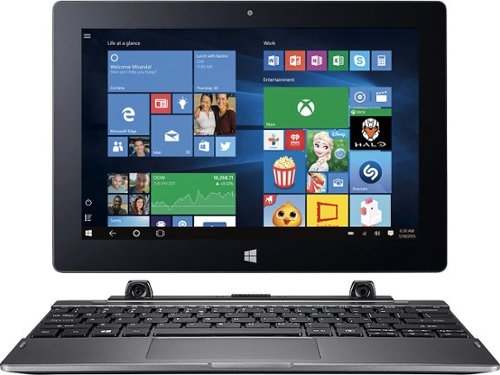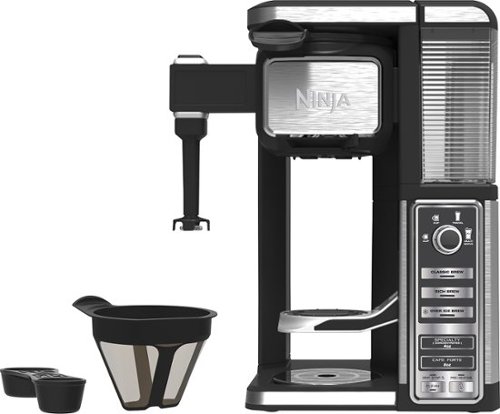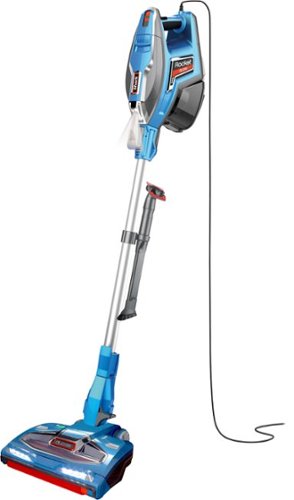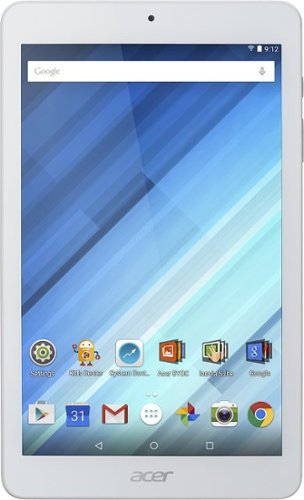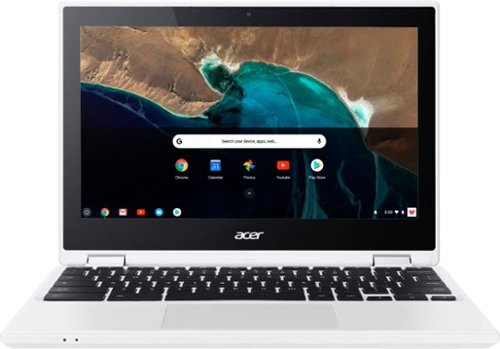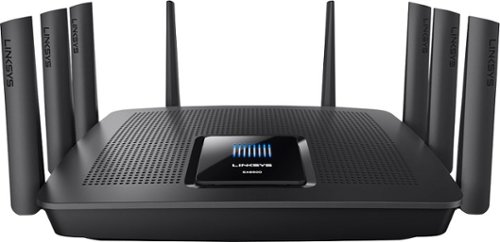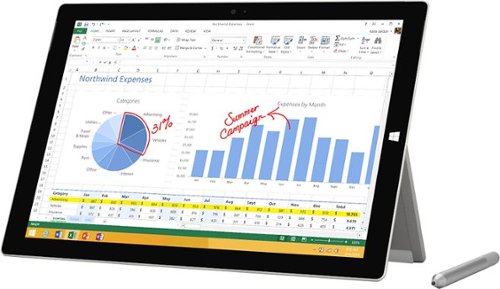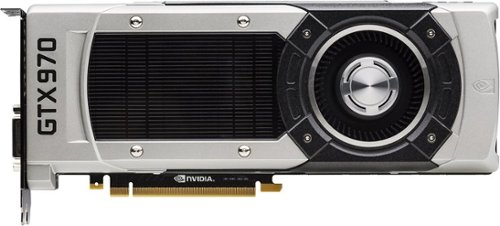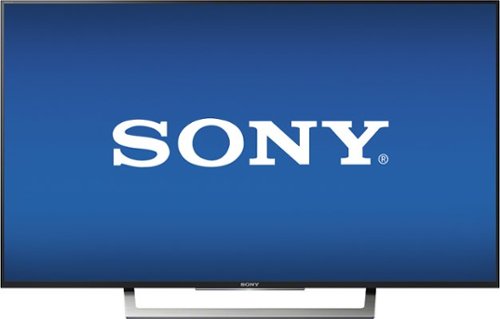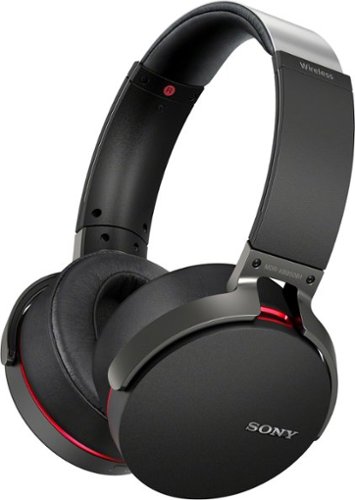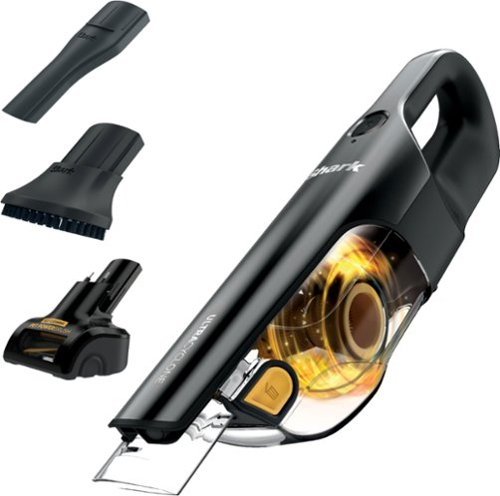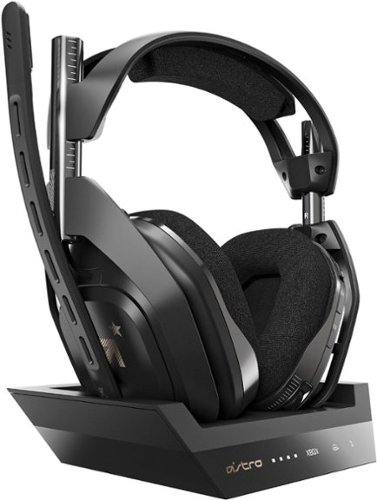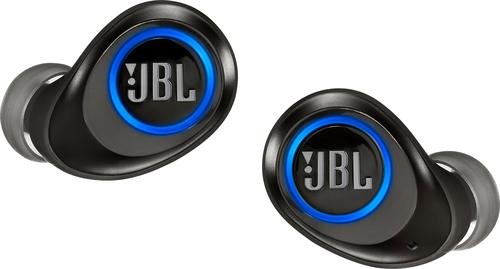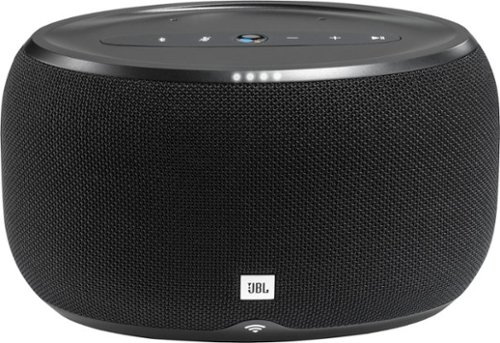aarondr's stats
- Review count185
- Helpfulness votes1,204
- First reviewOctober 22, 2014
- Last reviewMay 22, 2024
- Featured reviews0
- Average rating4.6
- Review comment count6
- Helpfulness votes10
- First review commentJuly 8, 2014
- Last review commentMarch 30, 2017
- Featured review comments0
Questions
- Question count0
- Helpfulness votes0
- First questionNone
- Last questionNone
- Featured questions0
- Answer count16
- Helpfulness votes31
- First answerJuly 8, 2014
- Last answerDecember 11, 2021
- Featured answers0
- Best answers4
Revive your Apple Watch conveniently with this Belkin Valet Charger power pack. A single charge of its 6700 mAh battery refuels a watch up to eight times, and an embedded smart chip detects connected devices for automatic wireless charging. This Belkin Valet Charger power pack includes a USB port for simultaneously charging additional devices.
Customer Rating

5
Great Portable Charger for the Road
on January 1, 2017
Posted by: aarondr
from Richmond, VA
The Belkin Portable Power Pack is a simple but powerful (hehe - get it?) product. It’s a great way to charge your iPhone and Apple Watch while on the road. One of the biggest pains I’ve had with the Apple Watch is that it’s charger is not the most convenient to take on the road. I use a bedside TPU dock for the watch, which makes it even more of a pain to ‘pack’ the cable. Couple that with stupid expensive replacement chargers, I have no desire to ever move the cable from its secure home. This is where the Belkin charger comes in and works great! I’ve found that I can charge it during the day with a simple micro-usb and 1amp wall wart USB charger, and then it can effectively refill my iPhone and Apple Watch from the high 20% power range to full without fully emptying itself. This is great, since I can usually pull 2 days of moderate use from that amount of power.
On the road this is a great device. It’s compact, fits great into a grid-it, and matches the aluminum finish of other Apple products. It weight is distributed away from where the Apple Watch charges. This is a great feature, as I use loop bands on my Apple Watch. I’m able to balance the device on the edge of a table and charge the watch without removing my band. If you have a sport or leather band, this won’t be an issue, but the design either intentionally or unintentionally allows you hang the Apple Watch charging portion over an edge. You could always just remove the watch band if you’re too worried about it falling.
The device has a 4-led charge level indicator that is trigger as a button. This is handy, and it helps to know where the charge level is at. In my usage I don’t really need it (I cycle almost all the way down when I use it, as I charge both device from a low-power state), but it’s helpful to know what the status is in case it sits in my bag for a few weeks (which it’s too new for that, but I haven’t seen it lose much charge sitting around for a few days).
I haven’t timed recharges on the device, as I don’t go through power on either the watch or phone fast enough, but it appears to charge the iPhone about as fast as a 1-amp charger, while simultaneously charging the Apple Watch (again about as fast as the out of the box charger).
The only cons I can think of are that the MicroUSB cable that comes out of the box isn’t that long, nor is there a wall charger for it. You either use your Apple or other USB charger to charge it. Also you need your own lightning cable to charge the iPhone. I would have loved to see a full complement of cables for the price.
All in all I think it’s a great product. It’s worked its way into my grid-it for my travel needs. With my usage patterns I could conceivably make it through an entire week starting from a full charge with this and a lightning cable. I definitely recommend this charger!
My Best Buy number: 0741131094
I would recommend this to a friend!
Play games or program tech solutions on the wide 23-inch screen of this HP LED HD monitor. The antiglare flatscreen offers views from any angle, and the 1920 x 1080 display offers super-sharp images. This HP LED HD monitor has HDMI and VGA inputs, letting you connect a variety of peripherals and devices.
Customer Rating

4
IPS, Thin, but flawed
on November 23, 2016
Posted by: aarondr
from Richmond, VA
This monitor is a decent size, quite thin, and produces a decent image with IPS technology. Response times are adequate, I didn't see a whole lot of ghosting, but IPS glow is present. Blacks are pretty bad, and color seems off, no matter how much I adjust it. That said, this is a budget monitor, so you'd be hard pressed comparing it to a professional grade screen. It has an HDMI port and VGA port, but comes with an HDMI cable only. If you need to move it around, or want to use it as a utility monitor, it's super light, so it fits that need well. You cannot mount it, as it lacks a VESA mount. This is a basic monitor, and I'd recommend catching it on sale.
My Best Buy number: 0741131094
I would recommend this to a friend!
Enjoy powerful performance with this compact HP Pavilion Wave computer. The Intel i3 processor provides fast data handling, while the 1TB hard drive lets you store plenty of files. This HP Pavilion Wave computer has 8GB of RAM to run the latest applications and four USB ports for connecting multiple accessories.
Customer Rating

3
Interesting Computer but Buy the Higher End Model
on November 23, 2016
Posted by: aarondr
from Richmond, VA
I’ve seen several reviews on the HP Pavilion Wave, and all of them sell the device short of it’s potential in the household. A couple of observations that probably are in line with many of my peers: The sound isn’t as good as you’d expect if you’ve spent any time with an Echo or decent bluetooth speaker, performance isn’t as good as you’d get from a high end desktop w/ a quad core, and the base model is rubbish due to a traditional hard disk. It may sound like I’m starting of my review as highly negative, but I don’t feel that way towards the wave.
In fact, the wave is an intriguing device to me. I previously owned an HP MediaSmart Server. I had it for about 4 years before selling after it got a bit long in the tooth for me. This is in many ways a spiritual successor to that device. It shares the same low-wattage/TDP CPU class, the same rough size (although shape is another story), and even the internal layout is designed to a T. It’s a precision machine, one that deserves respect for what it is. In a open plan family household this is quite a killer little computer. It blends in, provide decent storage, and offers powerful features. You could hook it to a TV, or computer monitor, and use it even with the screen off. Something like a “Hey Cortana, how tall is the empire state building” will yield an answer. The built in microphone + speaker make this an ideal platform for Microsoft’s cortana.
What the wave represents isn’t a uber power gaming desk, a micro NUC, bluetooth speaker or even a budget desktop. It is the middle ground of all of those. It is essentially a hybrid of a laptop, desktop, and speaker. It’s execution could be better, but the concept is solid. It fills the role of a shared family desktop well. But don’t buy this model.
The reason? A traditional HD makes the computer SLOW. I’m not used to Windows 10 being so sluggish. The next model up the ‘X6F61AA’ is really the model you should consider. I say this because it includes a NVMe SSD, dedicated graphics, and a quad core CPU. These upgrades add a lot of future proofing. The NVMe can be added to the base model, but you need to remove about 34 screws and be good at jigsaw puzzles.
If you do go down the route of modification, this machine does support limited upgrades. The base model has a ram slot free, and even semi accessible (although still not for the faint at heart) for an easy upgrade to 16GB. The M.2. slot for the NVMe SSD (and it needs to be NVMe, a SATA based card will not work) is found on the back of the motherboard, and requires removing the motherboard from the machine. To add insult to injury, you also have to remove the CPU heatsink, as it actually secures the motherboard to the mounting hardware. Finally at that time you’ll be presented with the empty M.2. slot - conveniently missing the mounting screw which is a non-standard size. This is a modification for only the most adventurous upgrader.
If you do decide to upgrade, luckily HP provides instructions on how to ‘recycle’ the HP Wave which include complete teardown instructions with pictures. Lastly, you will recognize that the CPU fan can be mounted down a notch. This is to support the MiniPCIe graphics card w/ heatpipe similar to those found on the CPU. You won’t find this GPU to buy separately, so while it’s possible to add it, you’d need a donor HP Wave. While you have the thing torn apart, it’s important to note HP says it will support up to the i7 6700t, if you want to go quad core w/ HT.
The sound is passable, and certainly seems underwhelming given the age of the small tube speaker. But for basic ‘Hey Cortana’ usage, and basic music it works pretty well. With a device designed to blend into your decor, it would be nice if it’s speaker function was better executed. It uses a single driver, about 3” in size mounted at the top just underneath the resonation opening. The entire center of the device is a resonation chamber, with a port. It’s made of rigid plastic, which allows it to produce enough sound and a hint of bass. I feel as though the design makes sense, but the speaker/driver may simply not have enough excursion to bring any thump to the bass. Again, I find this disappointing, but the B&O tie in is really just marketing and the need for a Beats replacement (for some reason HP lost Beats once they were bought by Apple). Beside my impression of B&O is an emphasis on form over function, but I’m not an audiophile, so I’ve never heard their in-house loud speakers.
The included keyboard and mouse are ok, but the compact layout of the keyboard is a bit of a pain. I prefer my arrow keys separated. The keyboard and mouse are wireless, but not bluetooth. In fact, the wireless receiver is a standard USB dongle hidden inside the computer. If you want to replace the wireless keyboard and mouse, you could conceivably buy a another set and plug it’s dongle in there.
The internal fan can get loud during start-up. It’s a standard blower style fan, so it’s quiet until it needs to spin up. The CPU doesn’t get too hot in my testing, so it’s not a huge concern. That said, I did use new thermal paste when I did my teardown. There was a lot of paste out of the box, which can negatively affect thermals, but I doubt it makes a big difference given the low TDP CPU.
Looking from an aesthetic point of view, it’s not displeasing. The fabric on the outside is of decent quality and enough color blend to fit into most decors. I do wish this was a user replaceable part, with different colors. This seems like a missed opportunity to me. Perhaps someday I’ll reupholster it for fun.
Port selection is good. There is an HDMI, Display Port, USB-C, a couple USB 3.0 ports, gigabit ethernet and a kensington security slot. This is a legacy free desktop, and benefits from the slim form factor of all these ports. The device can support up to three monitors with the included CPU, so it’s possible (with display port uplink) to get 3 monitors hooked up. HP officially lists 2 4k monitors, and the HDMI is only 1.4, so you’d be locked to 30Hz. It’s nice to see a display port, as it offers the best performance and multiple monitor support. An SD Card slot on the back supports SDXC cards, so it’s a great feature for a ‘family’ computer which may become the dump ground of post-outing photos. There is also a combo headset jack found on the front, which is handy if you need it for conference calls, or private listening.
The build quality is excellent like most HP desktops. HP does a wonderful job with small form factor designs, and this is no exception. It’s put together with a boatload of screws and interlocking pieces. The internal structure is the plastic speaker chamber attached to a 1mm thick steel plates that make up the outside of the triangle. Components are facing inward, protecting them from the ‘elements’ of a family setting. One side is the hard drive, another the motherboard. The CPU’s heatsink angles around the corner to the top of the third side which is populated by a blower style fan. The steel offers decent shielding from magnetic sources, so placement shouldn’t ever be a concern. The quality is definitely solid here.
Most of the included HP software is unimportant. The B&O sound mixer does a good job of proving a global equalizer, but that’s about it. I’d probably recommend a clean install of Windows 10 to most people just to get rid of the bloat.
The most frustrating thing about this particular model is the speed. The traditional HD results quite a bit of stuttering. Even simply playing music in the web browser offered a bit of stuttering as the disk had trouble keeping up (about once an hour). I expect that there was more going on in the background than just that, but it goes to show how HDs are no longer a good experience.
The most frustrating thing about this particular model is the speed. The traditional HD results quite a bit of stuttering. Even simply playing music in the web browser offered a bit of stuttering as the disk had trouble keeping up (about once an hour). I expect that there was more going on in the background than just that, but it goes to show how HDs are no longer a good experience.
Is it upgradeable like a traditional desktop? Yes, and HP provides excellent documentation, but seriously, you won’t want to upgrade this machine. I’ve been building desktops for decades, and this was the most challenging ‘upgrade’ I’ve ever done. Thus go for the factory upgraded model for a bit more cash and be happy you did! Is there anything wrong with this computer? Not really, but the lack of an SSD results in a frustrating experience. You could use it for a home media server, or sharing device. In those roles, the lack of an SSD is probably ok. For everything else, go with the SSD+Quad core model, it will address the biggest complaints I have.
My Best Buy number: 0741131094
No, I would not recommend this to a friend.


Add high-end performance to your everyday life with the Google Pixel XL. A quad-core processor, a 5.5-inch LED screen and 32GB of memory ensure this phone is able to handle daily life, and Corning Gorilla Glass 4 protects the screen. Easy cloud storage ensures you never run out of space on the Google Pixel XL.
Customer Rating

5
THE Android Phone from Google
on October 21, 2016
Posted by: aarondr
from Richmond, VA
The Google Pixel XL is Google’s latest attempt at a pure Android device. Unlike the Nexus line before it, the Pixel XL doesn’t have any partner branding, or attempt to identify anyone other than Google as the manufacturer. This, unequivocally is the Google phone.
I’ve been a long time Nexus user, owning a Galaxy Nexus, Nexus 4, and Nexus 6p. I made a jump over to the OnePlus One, but found the software experience lacking. Unfortunately when it came to the Nexus 6p my experience wasn’t quite as good as I had been used to with the Nexus 4. The OnePlus had spoiled me on battery life and unique build quality, while the Nexus had spoiled me on software support. I’ve recently switched to an iPhone 7, so I feel like I’m in a unique position to give a perspective on this phone.
The build of the Pixel XL is definitely high quality. The body feels of high quality aluminum. The front glass teardrops into the chamfered edges which is much more attractive looking and feel better in the hand than the Nexus 6p’s flat glass. The chamfering is quite a bit more pronounced on the Pixel XL than its predecessor. This makes it feel slippery compared to the Nexus 6p, however the glass back around the finger print reader adds a nice bit of grip to the phone. It still has more grip than a naked iPhone, and thus, I feel like you’d be more likely to use the phone without a case.
The bezels are embarrassingly large, a trend that has continued since the end of the LG Nexus era. Why a device with no front home button needs a bottom bezel that is this large is kind of a mystery. Even the 6p’s bezel, justified by its secondary speaker, is smaller than the Pixel XL’s. Another interesting piece is that its thickness is near identical to the Nexus 6p, but its tapered instead of having a ‘bump’ found on its older brethren.
The camera is excellent. There are plenty of comparisons out there, but essentially you get a really nice camera without an annoying bump, hump, or protruding lens. This alone makes it a winner to me. It’s a slick package, and Google should be praised for a sleek design that is a form and functional improvement over the iPhone and most of its competitors.
The phone is light, but doesn’t feel cheap. The iPhone feels heavy in comparison. I can’t comment on durability at this stage, but it isn’t probably a stretch to say it’s better than its predecessor. The materials here are all aluminum and glass, an there aren’t any stickers covering body pieces like on the Nexus 6p. The speakers are of good quality as well, even if they are bottom firing only. Up top you’ll find the 3.5mm headphone jack, a clear indication that Google doesn’t feel quite as strongly about this legacy port.
Performance wise, the Pixel XL is a screamer. Youtube videos started playing almost instantly compared to the Nexus. Side by side it was clear the Snapdragon 821 in this phone is a class above the 810. This observation is yielded also in benchmarks, with Geekbench 4 showing a huge multi-threaded improvement, even though the 810 technically has 4 more cores. Indeed even Antutu showed roughly double overall score with big boosts across the board. The Pixel XL had 137521 in Antutu, while the Nexus 6p was only 74760. The iPhone 7 plus pushed out an impressive 189382 score, but essentially all but the most discerning power user would have a hard time pushing these phones beyond their comfort zone.
Inside the box you'll find not only the power brick, but also a USB-C to USB-C cable, USB-C to USB-A male, and a short USB-C to USB-A female host adapter. That's a lot of nice cables in the box, and a great head start for anyone that doesn't have a USB-C cables or accessories. USB-C is the future, and this phone is ready for it.
Battery life is hard to gauge at this point, but I can’t say it’s bad. The biggest indicator to me is that it slowly drains on stand-by and doesn’t seem to drop too fast under heavy load. It charges quickly thanks to USB-C PD, and even gives a nice estimate to how long till it’s fully charged (which has been pretty reliable). The screen is bright, and the AMOLED shines here against the iPhone’s IPS. The whites are also whiter than the Nexus 6p - this is a superb screen in every way I observe. Obviously being an AMOLED it’s saturation is a bit over exaggerated, but most people would find that an advantage. It certainly is pleasing to look at it.
Overall Google’s ‘freshman’ attempt at a phone is pretty good. I won’t say this is their first phone, as their hand has been deeply involved in every Nexus device since the first Nexus One. There are so many similarities to previous Nexus line devices it’s hard to call this a first generation phone from Google. Regardless, this device has a higher polish than any of its predecessors, and it’s by far the fastest Android device I’ve used. If you want Android unadulterated, this is the phone to get right now, and it’s a huge improvement over the Nexus 6p.
My Best Buy number: 0741131094
I would recommend this to a friend!


Acer Switch One 10 Convertible 2-in-1 Laptop: Combine power and mobility with this Acer Aspire Switch One laptop. Easily convert this compact notebook into a tablet with its detachable 10.1-inch touch screen, and stay productive with its Intel Atom quad-core processor, 32GB internal storage and 2GB of RAM. This Acer Aspire Switch One laptop has two built-in stereo speakers for enjoying music and movies.
Customer Rating

3
An Evolution When A Revolution is Needed
on October 21, 2016
Posted by: aarondr
from Richmond, VA
The Acer Switch One is Acer’s latest iteration of the Switch series. I’m no stranger to these models, as I’ve owned 2 other Acer tablet hybrids that were very similar. The first of which was the Acer W510 - It didn’t have the niceties that the Switch One 10 has, it was a first generation Windows 8 device circa late 2012. There was no magnetic latch, nor reversible orientation found in this model. It relied on a switch to disconnect from the keyboard. It was also thicker. It did have a spare battery in the keyboard base, but essentially it was the same keyboard and formfactor. It was also a dual core Atom of the Clovertrail persuasion, which performed only slightly better than its netbook forefathers.
When I bought the Switch 10 (SW5) I really was impressed with the improvement in experience. The quad-core atom brought much better performance across the board. It was no i3, but it kept up well enough with Windows 8 native apps. It was a good evolution. The Switch 10 did drop some more of the ‘premiem’ features of the W510, but at the same time it was a lot cheaper.
The Switch One 10 is yet another example of a manufacturer adding another word to a title to differentiate from the previous generation. Loaded is the Cherry Trail update of the Atom on a 14nm process. Unfortunately, this model is 2GB of RAM, and 32GB of storage - identical for its 4 year elder. The price however has moved down another notch, so it’s hard to complain. Instead of a iPad 3 competitor, this laptop lives at the top of the budget pile - being outclassed by cell phones (for instance Sunspider even in Edge is 3 times slower than the iPhone 7 in Safari). Still, you get a lot for your money: An IPS screen that is pretty bright, a useful form factor w/ detachable keyboard, a multi-touch touch screen and touchpad, micro-sd expandability, and HDMI (albeit micro-HDMI) out. It’s a shame that the power brick has to be a power brick - as it’s rating is 5V 3A. A little ‘evolution’ in the connector could have brought USB-C PD as the power source instead of the old school barrel jack. Still it’s a capable little machine.
I guess what’s most disappointing is that in many ways it’s not any better than the device seen 4 years ago and not any faster than a it’s 2 year old predecessor. Battery life might be a tick better, but it’s a small evolution on an already great power sipper. Loading web pages is slow, and you’re best off using Edge for the best performance. The device will stutter at times, overloaded when tasks go beyond the simple (I’m a power user, so this affects me much more than it might a basic user). Coupled with the limited RAM and storage, it’s a computer that stands as a great ‘cloud’ consuming device, but not something you’d want to do any serious computing on. While the embedded GPU is light years faster than what was found in the Clovertrail chipset, it’s still not something you’d want to use for anything but casual games.
What sets it apart from other budget tablets is the complete picture it offers. You get full Windows 10 w/ it’s ability to run legacy apps (albeit slowly), a keyboard that is touch typable, great battery life (accept standby isn’t as good as it should be), Word/Office Mobile, and a variety of form factors to use the device in. An Android tablet of similar price most likely won’t be as versatile - and even if it was wouldn’t offer the full capabilities you get with Windows 10. A iPad in this price range would be used, most likely two or more generations behind, and come with no keyboard. As long as you know what you’re getting yourself into, the Acer Switch One 10 offers a curated design in a great budget tablet. You’d liken it to buying the last model year of an older body style car. The body panels have been redesigned to make it look modern, and engine tuned up, but it’s the same car that was released 4 years ago but sold at a great discount. This means you’re getting probably the most idealized design of the tablet that Acer released 4 years ago. The design is cleaner and sleeker, the tablet portion doesn’t have any strange design warts found in the first generation. But the downside of course is that this certainly doesn’t represent the ‘latest and greatest’ in the Windows tablet land. Nor does this tablet have some of the niceties of previous tablets. This is a device of compromises. If you have the budget, I’d highly recommend looking at Acer’s Switch V10 - which is a completely new generation. I’m sure it isn’t all roses, but the vision for the future is there. It’s this device’s spiritual successor and while it has much of the same hardware, it also has better wifi, USB-C and newer components.
Overall I’d recommend the Switch One 10 for anyone that can snag it on a good deal and needs a ‘thin-client’ to go along with other Windows machines they own. A college student might want to consider this if their studies consist mainly of note taking and/or paper writing as it does a good job with everyday tasks. However Comp Sci student would fall asleep waiting for a compile to finish. I use it as an occasional machine for light tasks, as that is about all it can handle.
My Best Buy number: 0741131094
I would recommend this to a friend!
Brew delicious coffee your way with this single-serve Ninja Coffee Bar system. It uses any ground coffee while bringing out the best flavor with advanced thermal flavor extraction technology. This versatile Ninja Coffee Bar system has a built-in frother that lets you brew, froth and drink out of one mug.
Customer Rating

5
Ninja Coffee Bar 2.0
on September 25, 2016
Posted by: aarondr
from Richmond, VA
Earlier this year my wife and I had a discussion about our k-cup machine. We recognized how expensive per cup it was, while also realizing that it produced ~ok~ coffee. This especially became important when she started drinking coffee. We tried a couple coffee machines, until we found the Ninja Coffee Bar. We bought it with the metal carafe, and couldn't be happier. That was until we received the new fancier version. What's different comparatively? Well, let's start with what hasn't changed.
Compared to the original Coffee Bar, they both feature the 'Thermal Flavor Extraction' technology, they both can brew a single cup, and larger amounts of coffee. They both have removable water tanks, and accept wedge style filters. You can froth milk with both and brew cappuccino style beverages from normal coffee grounds. They both come with excellent service, and a book full of recipes to try. The coffee is flavorful and tastes great, probably better than many brewers in this price category.
Where they differ is really how you use/drink coffee. The original begs you to use the carafe. The metal carafe version is excellent, keeping coffee warm for hours. While you can brew a single cup, I found the best balance brewing a pot. This version brews a single cup as fast as you'd expect from a k-cup maker. I found I went back to it to brew more coffee, and took more 'creative' liberties than I did with the old model. The brewer also comes with a reusable coffee filter, which is a nice addition to the package. Oh, and unlike many single cup brewers, you'll fit almost any coffee mug underneath.
As for specialty drinks - they're pretty dang good! Are they exactly like coffee house drinks? No, but they are close considering you're using normal coffee grounds. I brewed on the Cafe Forte setting with about 4oz of milk and was impressed how close it tasted to a coffee house style beverage - and this was bargain basement original Folger grounds. The included milk frother is motorized and easy to use and clean - removing my complaint from the original version (which included a manual frother that was less convenient). The frother portion detaches for easy cleaning. I found myself more willing to play with making specialty brews with frothed milk. I think this highlights what Ninja was trying to do with the original model, and it's clear they're really pressing the capabilities here to show its value.
The build quality of course is excellent, just like the original. The materials are solid, the design is thoughtful, and even the coffee scooper has a snap attachment to the side of the unit. The frother folds away when not in use which is super.
If you're looking to replace the old k-cup maker to reduce cost and get more flavorful coffee, this is a great model to explore. I was a huge fan of the original Ninja Coffee Bar, and this just highlights the original's strengths. Brewing single cups of any size with standard coffee supplies is a lot cheaper than the cups and produces a lot less waste. This maker has a ton of flexibility and produces pretty compelling coffee house style beverages. This is a great improvement on the original concept with the only limitation being brewing coffee for larger groups. Still, the fact it brews so quickly from startup is a pretty good argument even against this limitation.
My Best Buy number: 0741131094
I would recommend this to a friend!
Power through your weekly carpet clean with this Shark Rocket with DuoClean complete upright vacuum. It eliminates particles both large and small, and the deep-cleaning bristle brush breaks through embedded dirt to ensure a deeper clean. Plenty of space for debris ensures this Shark Rocket with DuoClean complete upright vacuum is practical for your everyday cleaning needs.BR>
Customer Rating

5
Great Improvement on a Successful Product
on September 25, 2016
Posted by: aarondr
from Richmond, VA
I'm an owner of a Shark Rocket vacuum (HV301). I was skeptical about the original purchase, but we wanted a vacuum for the main floor that was small and could handle the steps upstairs. It needed to do hardwood, and get under furniture. Our old vacuum was best for carpet, and while it did well, it was a heft to carry up and down stairs. This is where the original Rocket fit into our household. It worked very well in this roll, but eventually we went robotic for our day to day.
Our primary compliant about the original Rocket was the size of the head. While it never loses suction as the advertisements will tell you, it just didn't cover much area and took a long time to clean our downstairs square footage. That, and the fact the dustbin was non-removable and extremely small meant that it was a bit of a pain to use.
Shark certainly listened to these sort of complaints when designing the Rocket Complete. First of all, it retains the light-weight size that makes the Rocket series appealing. The floor head is the same size, but due to the dual brushes, it seems to require less re-sweeping. The first brush is microfiber, and the second is more of a bristle style. It also retains compatibility with the accessories from the first generation, so it's easy to add this to a Rocket household. One can never have to many vacuums around when little ones are running around. On that subject, my son is quite sensitive to vacuums, so it's really nice to see them keep the noise level to a minimum. The Rocket Complete is quieter and stronger than the original Rocket.
Another improvement from the original is you can easily detach the floor head with your foot, instead of having to bend down. There is a foot switch that detaches it, so you can use the attachments without much effort. As for attachments, inside the box you'll find a upholstery tool, dusting tool, and crevice tool. Additionally there is a long wand that is designed to go under appliances. I can't tell you how much this excites me, as I know after moving a few appliances how nasty it can get under there. Don't expect the first time you use it to get everything, but if you keep using it, it'll do a great job getting a majority of the dust bunnies. My only complaint is with the crevice tool, which has a sliding dusting attachment. The attachment effectively limits the depth you can use the crevice tool to about 4". I might be missing something there, but while the attachment itself says its removable - but all I seem to be able to do is slide it back up.
The Rocket Complete addresses another compliant I had, the dustbin being permanently attached to the motor. This made emptying the container cumbersome. My wife is sensitive to dust, so I lug the motor and all 30' of cord out to the garage and empty it into the trash out there. The Rocket Complete's dust bin detaches, making this a much easier feet to accomplish. Coupled with the fact it's nearly twice as big, its a huge usability improvement over the original Rocket. Additionally, there are LED lights on both the floor attachment and the vacuum base itself, which mades it easy to see those harder to pick up pieces or stains you might otherwise miss.
So with robotic vacuums at my command, would I still want a Rocket Complete? Absolutely. This is probably the perfect companion to those with robots. It's small enough to easily store, it's easy to pull out and sweep, but it has the capacity to do a nice full cleaning and really dig out what those weaker vacuums cannot. It also fits in places they can't, and under appliances as well. I'm very impressed with this next generation, and like the direction Shark is going with the Rocket line.
My Best Buy number: 0741131094
I would recommend this to a friend!

Enjoy a compact tablet that fits neatly in your pocket with this Acer Iconia One 8-inch tablet. It includes a quad-core processor and 1GB of RAM that deliver powerful processing to play all your games and apps, and the 16GB of flash memory ensure this Acer Iconia One 8-inch tablet and store your files.
Customer Rating

4
Solid Tablets for the Price
on September 21, 2016
Posted by: aarondr
from Richmond, VA
I received a 8" for my review for TIN, so my review is reflective more of the 8" device than the 10", however I did get a chance to play with the 10" in store for a bit, so I'll keep the review kind of high level. Essentially the device is a great google tablet. You get the play store, some junk icons on the homepage, but the cruft is kept to a minimum. So if you're experience is nexus devices, you'll feel at home at this device. You can even debloat it for the most part. The screen is lower resolution than some tablets in the past, but it's acceptable and gives the tablet's CPU/GPU a bit of wiggle room. Even with only 1GB of ram on the 8" model, I did not experience any slow downs in everyday browsing. Be certain you are not buying a premium device here - that said it's build quality is excellent, and I'd put it a notch above Amazon devices when it comes to overall software experience. I really enjoyed my 8" and I'm certain the 10" with it's larger RAM and Storage would be a great edition for those entrenched in Google's ecosystem.
My Best Buy number: 0741131094
I would recommend this to a friend!
Take this 11.6-inch Acer Chromebook anywhere you need to go thanks to its compact size and light weight. With its Intel Celeron N3060 dual core processor, you can enjoy fast Internet browsing and computing. The high visibility of the HD touch screen display with LED backlighting lets you use this Acer Chromebook in almost any lighting conditions.
Customer Rating

5
A Refined ChromeBook
on July 18, 2016
Posted by: aarondr
from Richmond, VA
I sit typing this review on the Acer R11 chromebook and honestly I’m quite impressed. Essentially 8-9 years ago we’d have called this a netbook, with its Atom... err.. Celeron processor, 11.6” screen size and small internal solid state storage. But those many years ago a netbook didn’t have a sharp IPS screen protected with hardened glass, or multi-touch capacitive touchscreen. Nor did they have a 360 degree hinge allow them to be used as a hybrid tablet.
What’s interesting is how much hasn’t changed but yet feels much less strange today than it did those many years ago. Smaller screens are a norm now. Optical disks are all but forgotten, and the inclusion of 2 USB ports feels generous and not stingy. For all intents and purposes the Acer is a refined netbook, building on the strengths of the original design. Here we have Google’s envisioning of a lightweight OS, based on Linux, but much more functional than the more standard Linux distributions before. The storage, screen, and input capabilities are all simply more refined.
The Acer also stands out from its grandparents with exceptional build quality. Comparing these devices it’s easy to relate to the 1970’s domestic automobile to the 2010’s domestic automobiles: quality and build are much higher than those of old. There is not a squeak to be had in the chassis, nor any keyboard flex. The lid includes an aluminum plate with a texture that would make the most expensive netbooks of old jealous. The hinge design is quite stable with aluminum reinforcement. The trackpad is also much better with two finger scrolling and a size no less than twice the size of its forefathers. As mentioned before - the screen would embarrass even high end full-sized laptops, with it’s WXGA resolution, gorilla glass, capacitive digitizer and IPS screen is nearly beyond reproach. In fact, there is almost no IPS glow, colors are gorgeous, it presents quite high brightness in an indoor environment and blacks are deeper than I could believe IPS screens could reach on a budget.
By modern standards, the Acer is definitely a budget machine. That said, this is by far a premium budget machine. The worst criticism I can levy for the R11 is it’s trackpad. While a good size and very comfortable to use, the scrolling is a bit jarring. When two finger scrolling, slow scrolling accelerates appropriately, but if you flick your fingers too far acceleration is gone and scrolling feels very disconnected. Furthermore, the trackpad has a small break in period which feels odd. The travel involved is nearly equal to the key travel of they keyboard. But what’s out of place on the trackpad, is quite welcome on the keyboard. The key travel is quite nice, linear and forgiving. While the keys are spongy, they are comfortable and accurate and quiet. They lack a backlight, but that’s forgivable. The keyboard has little to no flex, and is standard chromebook layout. You have your normal QWERTY layout, lacking F-keys, replacing them with back/forward, refresh, fullscreen, multitasking, brightness, sound and lock respectively. Caps lock is replaced by search (and luckily ChromeOS allows you to remap it to Ctrl if you wish). The left CTRL and ALT are oversized as on other Chromebooks.
Performance is acceptable and that’s the best I can say about it. Inefficient webpages load slowly, but modern efforts work reasonably well. The N3060, while being a modern Braswell CPU, performs much like its predecessors but consuming slightly less power than the previous generation. It easily doubles performance over its grandparents. In fact a Core 2 Duo of this era would be hard pressed to keep up with this power sipping ‘Celeron’ in Atom clothing.
Battery life is around stated 10 hours. Currently after being rather active: benchmarking and typing this entire review the battery remains over 70%. This is about 3 hours of continuous moderate to high usage at 60-70% brightness. While some may quibble over one or two hours of additional runtime in larger ChromeBooks, the Acer definitely qualifies for full day battery life. If what you need is a note taker, then the R11 is a definite consideration.
Touch is responsive, and ChromeOS has gone a long way to ensuring it’s a good experience. The browser zooms with obvious GPU acceleration, and hence is quite smooth. The capacitive touchscreen has no noticeable lag, and it’s easy to use it to scroll and even play games. ChromeOS is just as adept at adapting to touchscreen as Windows 10. In fact, I’d say the on-screen keyboard is more reliable and predictable than you’d find on Windows 10 hybrids. Of course that all may change as time progresses. ChromeOS does seem to be aware of touch capabilities, as the tab UI seems ever so slightly ‘taller’ than on a pure laptop, ensuring tabs are an easier touch target. Hint: Swiping from the bottom of the screen will auto-hide the shelf.
The chassis of the Acer is elegant but a bit hefty. There is a thickness to the R11 that feels unnecessary and makes it stand out as opposed to the non-touchscren/hybrid competition. That isn’t to say it’s uncomfortable to hold or too heavy. In some ways it’s just right - with the proportions perfect in laptop mode. Stand mode and tablet mode feel less natural due to the total thickness of the device, measuring in at .8”. The device never feels too heavy or unnatural to hold. I did however have some odd behavior in tablet mode - where occasionally the keyboard wouldn’t deactivation. Windows 10 seems to have this down to a science on hybrid devices I’ve used, whereas ChromeOS still has it’s rough patches.
One thing I've always loved about ChromeBook's is the fact that they always include good wireless hardware. The Intel 7265NGW includes dual band AC. I easily hit my maximum internet speed via speed test. It's refreshing to see a budget machine with great wireless hardware.
Interestingly, the Acer R11 is one of the first Chromebooks to be inducted into the Play Store club. If you put the R11 to the ‘dev’ channel, you’ll find the Android Play Store accessible. Of the few apps I’ve tried, they all seem to work well. The biggest downside is the lack of certain capabilities due to lack of sensors. Riptide GP2 runs smoothly with graphics on high, but you must rely on the touchscreen controls. Microsoft Word installs and works well with the keyboard. While I only used a few apps, this is definitely exciting times for ChromeOS.
The real question is if this is the right device for you. If you don’t need a large screen or full desktop applications, ChromeOS is a definite contender. Productivity is easy to have on this device with the full power of Google’s suite at your disposal. Where most Chromebooks fall down is performance in the face of a power user, and the Acer R11 is no different. The N3060 CPU keeps up, but barely. The GPU keeps graphics flowing, and there’s a definite advantage of this new GPU evident, but the CPU is marginally faster than each prior generation. While it is blindingly fast compared to 10 years ago, it’s still slower than the high end of 10 years ago, so keep that in mind. The screen is great on a device like this, so don’t feel like there is any compromise going on here. The trackpad is flawed, but the touchscreen and keyboard make up for its issues. Apps are plentiful and HTML5 is in a much better place than it was when the first netbooks roamed the earth. Chrome OS has Android as a great fallback for more apps. The R11 is a capable machine at a decent price. The netbook is dead, long live the ChromeBook!
My Best Buy number: 0741131094
I would recommend this to a friend!


Your household is busy streaming media, working online, and playing games every day. This Linksys Wi-Fi Router will expand your network coverage, send signals directly to your devices, and deliver a lag-free connection, even when you’re all online at the same time.
Customer Rating

3
Overkill for Most, Underkill for the Rest
on May 23, 2016
Posted by: aarondr
from Richmond, VA
The EA9500 is Linksys’s ultra-high end WiFi router. I still remember the days when $100-200 routers were the high end - now if you’re buying $200 routers, you’re decidedly in the mid-range for most manufacturers. The EA9500 is a tri-band monster that brandishes 8 external adjustable antennas, 8 gigabit LAN ports, USB 3.0, and the latest and greatest 802.11ac standards. The SoC used is Broadcom’s BCM4709C0, which offers an interesting 5 core setup, a dual core Cortex-A9 main CPU with dedicated Corex-A7’s per each WiFi band. Like other recent Linksys CES hardware, the EA9500 is a Wave 2 802.11ac WiFi devices.
The biggest change with wave 2 is MU-MIMO. What does MU-MIMO do? Well the more WiFi clients you have the ‘slower’ your wireless network gets since each transmit and receive happens as a timeslice of airtime. If you have 4 clients, client 1 sends/receives, then client 2 sends/receives etc. This all happens so fast you don’t notice. But the more clients you add, the slower you get. 802.11ac’s MU-MIMO helps solve this by allowing groups of clients to exist. Wireless clients group together and are allowed to receive at the same time (802.11ax will introduce send and receive MU-MIMO). All this fanciness is great since more and more of our devices rely on WiFi in the home. The downside: MU-MIMO requires that the client support the technology, and as of the initial release, there aren’t many clients. But hardware manufacturers keep pushing bigger and fancier routers, and eventually the clients will catch up. I once felt like AC was almost unnecessary since so few clients supported 802.11ac, but now almost all my clients are AC, so this router’s time will come. Throw on top of that the EA9500 also features band steering for it’s dual 5Ghz bands, meaning it can intelligently balance large amounts of clients between the two radios. The advantage of buying a router like this is future proofing, and handling a boatload of high bandwidth clients.
Hardware
It used to be that 5Ghz suffered range issues, any more than a single wall would usually leave you with too little signal. In fact my WNDR3700’s 5Ghz network would oftentimes drop out or barely work. However, that is no longer the case as most of the 5Ghz devices I’ve worked with recently push strong 5Ghz signal much further. This is no exception with the EA9500, as I had no range issues, even with the router placed in one corner of my 3000+ sqft house. Having 8 external antennas certainly helps it’s case, but it is still impressive to have such good range. Even more impressive is what 802.11ac can deliver with just a little signal. If you haven’t jumped on the AC train yet, it’s time!
The EA9500 has an interesting accompaniment of 8 LAN ports in addition to the single WAN port. This build in switch actually leads to an interesting theoretical advantage over most AC routers - potentially multiple wired link aggregated clients. While I’ve already seen a 3x3 client peek out a gigabit wired connection, I could imagine a 4x4 client could actually keep it pegged under right circumstances. With 8 ports, you could hook up a NAS or computer and use link aggregation on the wired network to actually go beyond the limitations of a single wired connection and be able to do 2Gb. I never thought I’d be saying it, but you could actually use the greater bandwidth provided by the wireless connection. Unfortunately I do not have a 4x4 client, nor a spare NAS with link aggregation to test this theory, but it definitely gives perspective on why you’d want a larger switch on one of these bad boys. I stumbled across a review saying this wasn’t a feature of this router, but link aggregation/teaming is usually a feature of the client, not the switch, so I see no reason it wouldn’t work (I effectively team 2 NICs on my Windows Server 2012 R2).
In my real world testing, I found quite speedy WiFi with 802.11ac clients. Even in a 2x2 device could manage 70MB/sec. A 3x3 MacBook Pro was able to peek out gigabit wired at 110Mb/sec which was an eye-openner. These speeds were observed copying to my Windows based NAS.
Unfortunately I saw similar or worse performance for the SMB and FTP though USB shares when compared to the EA7500. For testing I used a USB 3.0 drive (same one I referenced in the EA7500 review). Copying to and from I saw read and write over SMB at 20-30 MB/sec and 15-25MB/sec respectively. FTP generally started out slow but increased in speed as the transfer went on. I saw peaks around 50-60MB/sec read, and around 25-30MB/sec write. While these numbers are in the same ballpark as the EA7500, they are still a disappointment compared to dedicated NAS hardware.
Hardware wise, I find the SoC disappointing. Broadcom’s BCM47094 dual core + 3 cores is certainly capable. While this setup brings quite a bit of raw compute power, the Cortex-A9 BCM47094 main CPU isn’t as theoretically powerful as what you find in the EA7500, which is a bit of a disappointment. That said, I doubt it matters given the software, but one would guess if something like OpenVPN was ported to the firmware, that you’d see better throughput on the EA7500. I can’t be certain of that (as many things factor into that), but it’s a theory I feel somewhat confident in based on my knowledge of ARM CPUs. Furthermore the flash and RAM found on this device (256MB RAM, 128MB flash) is adequate, but not category leading. Does it matter? Again probably not, but WRT series has double the RAM.
For me a tri-band router has always been a bit of a silly undertaking, but I can start to understand the appeal when you're suggesting this for a very large household. As it stands today I have around 15 WiFi clients most on the 5Ghz band, and I'm a small household. I can imagine a household with 3 teenagers and friend along with 2 adults and their devices would bring a much larger foot-print. Tri-band is a niche, and if you need peak performance from multiple high-end clients, it actually makes sense, otherwise it's a bit overkill.
Software
Firmware wise, you’ll find the standard Smart WiFi interface, the same found on the EA7500. This interface is a far cry from the WRT-54G days of yesteryear. Here we have a modern single page web app, with JQuery, Ajax, and -gasp- HTML5. The user experience is much better than other brands of consumer routers I’ve used (I’m looking at you Netgear with your ugly tables, and iframes). That said - my comments on this interface both criticism and compliments have not changed. Smart WiFi exceeds at making hard thing easy, but lacks some degree on common sense such as transport security on guest networks. Once again VPN is absent.
Conclusion
I can’t keep from feeling that the EA9500 is a bit of a let-down. Yes, the hardware is amazingly capable, but I can’t but keep from feeling that some of the hardware and software is disappointing for it’s price point. Don’t get me wrong - I praised the ease of use and parental features found in the EA7500’s firmware, which is identical to the EA9500’s. It was really good as far as stock firmwares go, however even in the EA7500’s price range I said it was a bit lean on features. Unfortunately there’s no VPN, no printer (AirPrint or otherwise) support, only basic NAS (SMB and FTP) with no personal ‘cloud’ access, and only very basic diagnostic tools. As one of my peer reviewers pointed out, if you change the device to AP mode, USB capabilities go out the door - and in fact almost all features go out the door (as the focus in the firmware is QoS, access control, etc - related to gateway/router functionality). This is again forgivable on lower end devices, and excusable on more expensive devices that might keep a degree of ‘ease of use’ over feature bloat.
Now here we are looking at a $400 router that essentially adds another 5GHz band and an additional antenna per band, but that’s it. To add insult to injury, most of your WiFi clients won’t and for the foreseeable future support 4x4:4 - meaning the claims of 2166 require clients that are few and far in between. Most devices are going to be 1x1 (most phones), 2x2 (iPads, higher end tablets, Retina MacBook, most ultrabooks), or 3x3 (MacBook Pro, high end Windows). Who has a 4x4 client? Very few unfortunately. 4x4 specs have been out for over 10 years (part of the 802.11n spec), but I have yet to see one client in person. Essentially, if you don’t seek out and find one of these high end clients - ostensibly to connect several wired devices from one location ala client-bridge mode, you’d be wasting the potential of this router.
I like the direction Linksys was going with the EA7500. It offered MU-MIMO future-proofing, but provided compatibility with almost all 802.11ac WiFi clients with a very fast SoC. It offered a simple, intuitive interface for home users that met realistic needs. A $200 MSRP fell in line with other high end devices, but I could forgive some of the features it missed since it excelled at the fundamentals you would want in a router. However when we work our way up to the EA9500, we double our price point, add hardware that only enthusiasts would need without backing it up with software enthusiasts would want. If I’m blowing $400 on a router I expect it to be an appliance that can fill multiple roles. That said, unless you have very specific needs, you’ll be better off with the EA7500. The EA9500 is a solid performer, and I cannot help but underscore how solid the WiFi performance is. But at it's MSRP, it's no match for many of the competitors out there.
My Best Buy number: 0741131094
I would recommend this to a friend!


aarondr's Review Comments
Microsoft Surface Pro 3 Tablet: The new Surface Pro 3 is in a category of its own. With a stunning 12" display in a sleek magnesium frame, Surface Pro 3 has all the power and performance of a laptop in an incredibly lightweight, versatile form. It may just be the ultimate device.
Overall 3 out of 5
3 out of 5
 3 out of 5
3 out of 5STILL NO NATIVE MKV PLAYBACK???
By worknstiff
from NC
Why can't surface pro 3 play mkv's? I really wanted to like the Surface Pro 2 and now especially the new Surface Pro 3's bigger screen and higher resolution. I like that it is a laptop replacement and also can be used as a tablet, but without native MKV support I can't see it replacing my Samsung tablet anytime soon. What a shame that you have all this computing power and still can't watch HD video's on this excellent HD screen. Why is Microsoft so adverse to making this the "PERFECT" multimedia consumption device, especially since all the lower price tablets (using MX Pro Video Player) seem to handle 1080p mkv's with DTS audio and subtitles just fine. I guess Microsoft doesn't want my money, SIGH.
aarondr
Richmond, VA
Uh...
July 8, 2014
MKV is a container format. VLC or other apps can play those natively (just download from the marketplace). You can also install codec packs that will bring support to windows media player. Any Windows machine can do it, but for legal reasons they don't include the codecs. Android gets away with it since it's GPL2 to start with (meaning all the open source codecs that are GPL2 can be included without infringing on FSF license. MS on the other hand would have to open source all of windows to distribute GPL based codecs).
+4points
4of 4voted this comment as helpful.
This NVIDIA GeForce GTX 970 4GB GDDR5 graphics card features multiple NVIDIA technologies, including CUDA and G-Sync, that ensure lush, realistic gaming visuals. NVIDIA SHIELD and GameStream allow you to stream portable and PC games.
Overall 2 out of 5
2 out of 5
 2 out of 5
2 out of 5good gpu but false info. spec.
By kojisan
from nevada
i originally bought this card because of the 4GB memory and future 4k display usage but after having this for a month. the performance is very good, low wattage, low fan noise, led custom and heavy on weight. over all, i don't see a 4GB usage on this gpu in the future and nvidia gave a real spec. of a gpu memory of a 195GBPs on 3.5 and 20GBPS on 0.5 memory.
my setup is
-amd fx 6100
-samsung SSD 120
-wd 250 HDD
-2x wd 2TB HDD
-gtx 970
-seasonic 520W
my setup is
-amd fx 6100
-samsung SSD 120
-wd 250 HDD
-2x wd 2TB HDD
-gtx 970
-seasonic 520W
aarondr
Richmond, VA
February 5, 2015
I agree that the specs sent to reviewers were false. I'd even agree that Nvidia knew about this probably since the first public reviews went out (if I'm an engineer, I'm reading reviews of my work - and noticing the incorrect specs - hopefully sounding the alarm). But to be fair, the specs (save arguably the memory bandwidth) are accurate on the product page and always have been. The fewer ROPs, smaller L2 cache, and segmented memory all suck compared to the press reviews, but there's nothing on the product box or product page that's false here.
-1point
0of 1voted this comment as helpful.
Power your home theater with this Insignia™ NS-SB515 2.1-channel soundbar, which features Bluetooth technology for easy wireless streaming. The 6.5" subwoofer produces quality low-end sound to enhance your favorite films.
Overall 2 out of 5
2 out of 5
 2 out of 5
2 out of 5Good Sound, Poor Execution for the Price
By aarondr
from Richmond, VA
* Packaging
Unlike many sound bars, the box is actually a rectangular cuboid. The packaging is secure and quite nice. Everything is wrapped in standard plastic and the larger items in a foam padding. The package itself was surprisingly light considering its size. Expect this to arrive in great shape if you are having this shipped.
Unlike many sound bars, the box is actually a rectangular cuboid. The packaging is secure and quite nice. Everything is wrapped in standard plastic and the larger items in a foam padding. The package itself was surprisingly light considering its size. Expect this to arrive in great shape if you are having this shipped.
* Setup
Setup was really easy. Just plug all the included cables in the holes that fit and you’re pretty much done. The subwoofer paired automatically and the included RCA cables will get most people running in no time. A RCA to 3.5mm phono adapter adds the ability to plug in your phone or tablet directly to the RCA inputs, which is a handy addition. No optical cable was provided even though this unit features it, so that's a negative in my book.
Setup was really easy. Just plug all the included cables in the holes that fit and you’re pretty much done. The subwoofer paired automatically and the included RCA cables will get most people running in no time. A RCA to 3.5mm phono adapter adds the ability to plug in your phone or tablet directly to the RCA inputs, which is a handy addition. No optical cable was provided even though this unit features it, so that's a negative in my book.
* Build Quality
The main devices (bar and subwoofer) are not regular cuboid shapes, but rather both are tapered and the soundbar is chamfered on the front ends. For the sound bar, the exterior is a matte plastic with glossy plastic ends and a rubberish material over the buttons found on the left side. The speaker grill is covered in standard cloth, and is removable (see pictures in the video). The stereo speakers are acoustically suspended and seem to be made of paper with foam surrounds and shiny plastic dust covers. They measure in at 5.75” x 1.25” in size and are rectangular in shape. In the middle is a multi-function LED and IR receiver eye.
The main devices (bar and subwoofer) are not regular cuboid shapes, but rather both are tapered and the soundbar is chamfered on the front ends. For the sound bar, the exterior is a matte plastic with glossy plastic ends and a rubberish material over the buttons found on the left side. The speaker grill is covered in standard cloth, and is removable (see pictures in the video). The stereo speakers are acoustically suspended and seem to be made of paper with foam surrounds and shiny plastic dust covers. They measure in at 5.75” x 1.25” in size and are rectangular in shape. In the middle is a multi-function LED and IR receiver eye.
The subwoofer is also made of plastic of the matte texture variety. The back of the device has an amplifier section made of steel with no adjustments to be made, just an LED light and pair button in case it gets disconnected from the soundbar. A 120v power cord is the only protruding item. On the bottom can be found a 6.5” ported subwoofer. While 6.5” is on the small size for a subwoofer, the driver appears to be made from quality materials. A rubber surround and relatively tough cone material are used, which is good considering there is no protection for the driver. There are four feet on the bottom which provide separation from the floor and allow the subwoofer’s port to breath. The feet here are similar in texture to the soundbar only thicker, helping to isolate the subwoofer and prevent unwanted vibrations. Removing the driver reveals a decently sized magnet and room for excursion. Inside the cabinet a short board of MDF appears to be bracing the enclosure. This design touch may be to prevent plastic rattling common to plastic enclosure subwoofers. The sub unit weighs in at 8lb 2.5oz, and I’d say subjectively that more than half that weight is the driver itself.
* Sound
The soundbar itself is rated at a total power output of 15W a channel and the subwoofer at 30W. As far as estimates go, I’d say they are pretty close to reality. 60W total power @ 1%THD doesn’t sound like a lot, but it does the job and can get loud enough to start to become uncomfortable. I was easily able to hit 90dB at 8ft distance with minimal distortion. Don’t let the numbers fool you, this soundbar can get loud enough for smaller spaces.
The soundbar itself is rated at a total power output of 15W a channel and the subwoofer at 30W. As far as estimates go, I’d say they are pretty close to reality. 60W total power @ 1%THD doesn’t sound like a lot, but it does the job and can get loud enough to start to become uncomfortable. I was easily able to hit 90dB at 8ft distance with minimal distortion. Don’t let the numbers fool you, this soundbar can get loud enough for smaller spaces.
On the remote there are 3 equalizer settings (DSP). The 'Standard' setting, while implying a flat curve, appears to be V shaped as the bass seems over exaggerated. Theater adds a bit of reverb and attempts to create a 3 dimensional soundstage which it accomplishes to a varying degree. The sound in this mode tends to sound like it’s in a tunnel, so personally I’m not a fan. News flattens out the bass and pushes the mids up. I don’t watch a lot of news, but it does emphasize dialog at the expense of other sounds so it might be the way to go for some usage scenarios.
For movies and TV the soundbar does admirably, producing clear vocals and adding quite a bit more depth to the sound than built in TV speakers. It compared favorably to my trusty old HTIB setup for dialog and normal TV/Movie viewing. The subwoofer does get a bit boomy at higher volumes, but generally does a good job considering its size. Again placement is the key. Putting it in a corner significantly increased the perceived output, and placing it near the front of the room caused it to blend naturally with the sound.
* Inputs
The soundbar supports both RCA audio and optical audio. While it supports digital audio through optical connection, it seems a token feature at best. It’s limited to uncompressed PCM 2 channel audio (making it an obvious setup issue born out by the 2 different reminder stickers on the soundbar and no less than 6 reminders in the manual). That said, you may still want to opt to use the RCA inputs for 2 reasons: there is no optical cable in the box, and many TVs can vary the volume of the RCA outputs using the TV volume (for example the Vizio M502b1) which may be more convenient. In back to back comparisons, the Optical input sounded ‘brighter’, but that might just be my TV and the soundbar’s DACs differing.
The soundbar supports both RCA audio and optical audio. While it supports digital audio through optical connection, it seems a token feature at best. It’s limited to uncompressed PCM 2 channel audio (making it an obvious setup issue born out by the 2 different reminder stickers on the soundbar and no less than 6 reminders in the manual). That said, you may still want to opt to use the RCA inputs for 2 reasons: there is no optical cable in the box, and many TVs can vary the volume of the RCA outputs using the TV volume (for example the Vizio M502b1) which may be more convenient. In back to back comparisons, the Optical input sounded ‘brighter’, but that might just be my TV and the soundbar’s DACs differing.
The device supports A2DP bluetooth audio, and the fidelity is of decent quality. I had one or two dropouts when the device was not line of site, but generally it kept a good connection up to the designated 10m distance. Pairing is easy, as the device shows up as ‘NS-SB515 Soundbar’ (heaven help you if you have two of these soundbars). The device ‘remembers’ 8 paired devices and connects to the last previously connected device in range. Connections must be forcibly disconnected to be able to switch devices. If your iPad was the last device connected, and you switch to bluetooth it will connect to it automatically, even though it is sitting on the shelf charging and you really wanted to use your phone. The solution is to get the iPad and disconnect or turn off bluetooth. So much for wireless convenience.
* Remote and other thoughts
The remote is a credit card style with buttons nearly as thick as the remote itself. The larger buttons aren’t stabilized very well and thus don’t pick up every press consistently. Their overall thickness makes it more awkward than most. The use of a CR2025 button cell is startling. While thinner, they are more expensive, harder to come by, and put out much less power than standard AAA batteries. This bears out in usage, as the remote is hit or miss from 9’, which is a byproduct of the poor IR transmitter and button activation.
The remote is a credit card style with buttons nearly as thick as the remote itself. The larger buttons aren’t stabilized very well and thus don’t pick up every press consistently. Their overall thickness makes it more awkward than most. The use of a CR2025 button cell is startling. While thinner, they are more expensive, harder to come by, and put out much less power than standard AAA batteries. This bears out in usage, as the remote is hit or miss from 9’, which is a byproduct of the poor IR transmitter and button activation.
Call me picky, but the remote has about 7 too many buttons on it and adds yet another IR remote to the living room stack. Subwoofer volume is separately adjustable, and each DSP and input is available at one button press. While this is nice, the primary functionality of the remote will be to turn on/off and change the overall volume. Since this device has only an RGB indicator LED the remote must have these extra buttons to make everything ‘directly’ accessible. Not sure if it’s on Optical Audio input? “Press the button just to make sure”. Is the sub all the way up? “Don’t know push the up button 10 times just to make sure.” The volume keys are conveniently placed on the left side and thus easily used by a right hander. However, oftentimes I would find the sound bar missing my button presses or conversely detecting one press as two and step the volume up 2 steps. If you integrate this into your entertainment center and you don’t already have a universal remote, you’ll most likely want to invest in one to simplify things.
On the positive side, ambient power usage is really quite under control. My power meter read a pretty steady 4 watts idle on the soundbar and less than a half a watt on the subwoofer while idle. This means leaving this on all the time is an option (again, I’m trying to outsource remote control to the TV).
The LED is multi-function using all three of its primary colors. Solid red indicates the device is in standby mode. Press the power button, and it turns green for exactly 10 seconds before turning off. Press any function button or source button other than bluetooth and the led will flicker red indicating it is receiving the command. Press the bluetooth button the LED will flash blue until it connects and then it turns solid. Everything here is basic, but functional. That is until my unit developed an issue with its LED. About 36 hours after initially plugging it in, with most of its time on standby, the red LED ceased to function and the green LED stuck in an on state regaradless if the unit is on or off. At this point the LED ceased to function as an indicator, and became more of an annoyance. I contacted Insignia support and was promised an answer within 48 hours. I did hear back in about 8 hours with a very polite reply. One advantage of the Insignia brand is that since they are exclusive to Best Buy their warranty service is handled through Best Buy’s geek squad, so you have real human beings to work with. Again, I don’t want to be too harsh here, because bad units exist in every level of manufacturing, and hopefully my review unit was the exception, not the rule.
* Conclusion
At this MSRP I feel as though Insignia doesn’t have much to offer. On a sale around half that MSRP, it might be worth it for a secondary TV room, dorm, or smaller living room. It will beat built-in speakers on most flat panels any day, offering quite a bit more bass and depth, and great flexibility in installation and placement. For normal TV listening this is definitely an upgrade but for the price other manufacturers offer more all around and the potential inconveniences of the design prevent this from getting my recommendation.
At this MSRP I feel as though Insignia doesn’t have much to offer. On a sale around half that MSRP, it might be worth it for a secondary TV room, dorm, or smaller living room. It will beat built-in speakers on most flat panels any day, offering quite a bit more bass and depth, and great flexibility in installation and placement. For normal TV listening this is definitely an upgrade but for the price other manufacturers offer more all around and the potential inconveniences of the design prevent this from getting my recommendation.
aarondr
Richmond, VA
Full Review Here
November 20, 2015
I had to abbreviate my review to fit into the length requirements of Best Buy's review platform. Here is the full unabridged: http://aaronromine.tumblr.com/post/133564337421/bb-tech-insider-network-and-the-ns-sb515
+1point
1of 1voted this comment as helpful.
Choose this Sony television with Android TV for an immersive audio and video experience. Its 4K Processor X1 brings stunning Ultra HD to your home so you can enjoy crystal-clear images in spectacular color. Every frame is automatically upgraded to 4K quality by this Sony television with Android TV, complete with automatic contrast adjustment for lifelike detail.
Overall 5 out of 5
5 out of 5
 5 out of 5
5 out of 5AWESOME TV
By Greg
This TV is awesome, 4K 120GHZ REFRESH RATE. Have connected my XBOX ONE as well as my iMac 5K and it performs awesome. Smart TV includes netflix, youtube, and many other apps. EXTREMELY THIN!!! very worth the price! LOVE IT.
DEFINETELY RECOMMEND
aarondr
Richmond, VA
August 3, 2016
The refresh rate of this model is 60Hz not 120GHz (that's like crazy high, I think you mean 120Hz). Just like the native 120Hz TVs they market as XR960.
+2points
2of 2voted this comment as helpful.
Enjoy a compact tablet that fits neatly in your pocket with this Acer Iconia One 8-inch tablet. It includes a quad-core processor and 1GB of RAM that deliver powerful processing to play all your games and apps, and the 16GB of flash memory ensure this Acer Iconia One 8-inch tablet and store your files.
Overall 4 out of 5
4 out of 5
 4 out of 5
4 out of 5Solid Tablets for the Price
By aarondr
from Richmond, VA
I received a 8" for my review for TIN, so my review is reflective more of the 8" device than the 10", however I did get a chance to play with the 10" in store for a bit, so I'll keep the review kind of high level. Essentially the device is a great google tablet. You get the play store, some junk icons on the homepage, but the cruft is kept to a minimum. So if you're experience is nexus devices, you'll feel at home at this device. You can even debloat it for the most part. The screen is lower resolution than some tablets in the past, but it's acceptable and gives the tablet's CPU/GPU a bit of wiggle room. Even with only 1GB of ram on the 8" model, I did not experience any slow downs in everyday browsing. Be certain you are not buying a premium device here - that said it's build quality is excellent, and I'd put it a notch above Amazon devices when it comes to overall software experience. I really enjoyed my 8" and I'm certain the 10" with it's larger RAM and Storage would be a great edition for those entrenched in Google's ecosystem.
aarondr
Richmond, VA
October 10, 2016
Yes, since it runs lollipop - that feature is out of the box w/ Android
0points
0of 0voted this comment as helpful.
Enjoy immersive sound with these Bluetooth Sony EXTRA BASS over-ear headphones. The presets let you choose between arena, club, hall and outdoor stage sound, and the noise-canceling technology lets you block out the world while you listen to tunes. Listen wirelessly for up to 18 hours with these Sony EXTRA BASS over-ear headphones.
Overall 5 out of 5
5 out of 5
 5 out of 5
5 out of 5Incredible bass, but don't forget the mids & highs
By lambda100
The Sony MDR-XB950B1 is the latest update to the company's Extra Bass headphones replacing the original MDR-XB950BT headphones. The XB950B1 looks nearly identical to the original XB950BT and both weigh the same. (I happen to also own the XB950BT). The left ear cup has the power button, micro usb power connection, audio cord input, microphone, and the bass button which on the current generation is re-labeled as “bass effect” to highlight the ability for the user to adjust the bass settings on a scale of -10 to +10 using Sony's Headphones Connect app. The right ear cup has the volume control +/- button and the skip forward/reverse, play/pause/answer phone button.
The MDR-XB950B1 is an over-the-ear headphone with very thick, soft, and comfortable earpads. I wear eyeglasses and the headphones do not press my frames unduly against my ears. I was able to wear the headphones for hours without discomfort. The metal headband is also well padded and did not feel heavy over my head. The headphones appear to have very good build quality and stretches well to accommodate various head sizes.
Now onto why you're really here... my thoughts on the highly subjective sound quality. These headphones by their very nature, were tuned by the Sony audio engineers to not only emphasize the bass at their default settings right out of the box, but to kick it up a notch to knock you senseless when it's turned up. Audiophiles will hate the sound signature for its total irreverence for how the song was meant to be heard in the studio. Those who own the original XB950BT will recall the nearly identical sound signature which is deep bass with some mids, and muffled highs which don't seem to break through. However, I noticed in my testing of the XB950B1 that the vocals/mids were a little cleaner and that some of the highs did come through ever so slightly better.
As I mentioned above, the way they are tuned from the factory, these headphones are not for the user who demands balance in the audio experience. They were clearly aimed at those who enjoy bass and a lot of it. Those who are seeking the well balanced sound spectrum with crisp highs and mids will be disappointed at first pass with these headphones, until they use an equalizer app to fine tune the higher end frequencies to bring out the highs which these headphones are very capable of and will reward you for doing so. I admit that I was initially dismayed by the lack of clear mids and clean trebles, but I started adjusting the equalizers and virtualizations that brought these headphones to life. Sony also acknowledges that some of us want more punchy bass and others want less by introducing the Sony Headphones Connect app which is available for free download from the Google or Apple app stores to allow users to adjust the level of bass to suit their musical tastes. The ability to adjust the bass from -10 to +10 is a welcome feature, and is the primary distinguishing feature between this second generation XB950B1 and the original XB950BT which only had a “bass boost” that went from extra bass to an insane amount of bass with no settings in between. Now that Sony has included the bass adjustment as an app, it should appease those on either side of the bass spectrum. The +10 bass setting will make the bass sound silly crazy out of this world, and the -10 setting will mellow the bass out a bit and bring you back down to earth. Additionally, the Headphone Connect app also allows users to select presets for outdoor stage, club, hall, or arena-style sound settings. I tried the different presets. They sounded okay, but I prefer to make my adjustments on a third party equalizer app.
Here are some other things to take note of. I really wished Sony included a case to store the headphones. The headphones are bulky and the earcups only turn so that the headphones lay flat. Sony should have also designed the earcups to be foldable (like for the MDR-XB950N1) so that they can be easier to store and transport. The battery life is very good, lasting 18 hrs, which is the same as the original XB950BT. This latest iteration (XB950B1) of the headphones does not suffer from the faint, but audible rumbling/hissing noise that can be heard at low volumes that was found in the first generation XB950BT. This is a great improvement as I found the hissing noise be to very annoying. Finally, these are neither noise canceling headphones nor noise isolating. Don't let the thick padded ear cushions fool you into believing that they will eliminate any ambient noise. With no music playing, you will still hear your surrounding, albeit a little bit muffled.
So in summary, for those looking to upgrade from the original XB950BT to the current XB950B1, the only real change is the freedom to make adjustments the bass via the Sony Headphone Connect app. The sound is very similar between the two. For those those who love bass, these headphones are for you! For those who are seeking their first purchase in the Sony Extra Bass line up, the XB950B1 is a superb choice since the bluetooth connection allows you to lose the wires and the app allows easy adjustment to the bass. And finally for those who are wary that the sound signature is too heavily tuned toward the low end frequencies will be reassured to know that the highs and mids will come through with proper tuning with an equalizer app. I highly recommend these headphones!
aarondr
Richmond, VA
March 30, 2017
I really enjoyed your review, and had many of the same points. I still can't believe that setting the app to -10 actually makes these headphones sound more 'normal'. I'll try adjusting the equalizer a bit as you suggest. Thanks!
+3points
3of 3voted this comment as helpful.
aarondr's Questions
aarondr has not submitted any questions.
The Shark UltraCyclone Pet Pro+ is a cordless handheld vacuum designed for powerful suction. It comes with a motorized self-cleaning Pet Power Brush that eliminates hair wrap, a lithium-ion battery, CleanTouch dirt ejector, and more, at only 2.8 lbs.
How long is the battery duration?
The vac includes a 2000ma battery. The motor is rated for 8amps draw (87w), which if you plug in those numbers to: https://www.digikey.com/en/resources/conversion-calculators/conversion-calculator-battery-life, you get 15m. Of course if you use the pet powered brush, it consumes ‘12w’ as rated by its sticker. That’s 1.1a additional, bringing our calculated runtime down to 13m. Empirically - that bears out - as I’ve gotten about 15m of runtime before it shuts down without the pet brush. I haven’t used the pet brush longer than 10m, but I’d assume it’d be pushing near the bottom fifth of the battery.
It’s just cool to see the math, and designed capacities bear out in real life. As with any lithium battery, it will lose capacity over time, but hopefully it’ll last much better than the old NiCad batteries of yesteryear. Hopefully this helps!
It’s just cool to see the math, and designed capacities bear out in real life. As with any lithium battery, it will lose capacity over time, but hopefully it’ll last much better than the old NiCad batteries of yesteryear. Hopefully this helps!
3 years, 10 months ago
by
aarondr
Experience legendary performance and sound of ASTRO Audio V2, with the convenience and freedom that comes without wires. The A50 Wireless + Base Station for Xbox One/PC delivers premium acoustics, ergonomics, comfort and durability that gamers demand. The all-new Base Station provides clear, low-latency voice communication, while making headset pairing and charging simple. The ASTRO Command Center software allows Pros and Live streamers to tune every input and output parameter of the A50 precisely for their specific setup. Experience absolute audio immersion with the A50 Wireless + Base Station.
I know that the a50s gen4 is coming out soon in August but how do people have it already?And also is it a 2.4g connection ?
The reviews your seeing are for reviewers on the Best Buy Technology Insider's Network program. Astro shipped a select few reviewers hardware to review. The audio I believe is 5GHz, but honestly I'm not sure where I got that spec (I swear it came up somewhere in reviewing).
4 years, 9 months ago
by
aarondr
Elevate your workout with these JBL Free wireless headphones. Their hands-free design lets you control music and make calls with the touch of a button, and the charging case stores 20 hours of backup power to keep tunes playing through your entire workout. These JBL Free wireless headphones use JBL Signature Sound to provide high-quality audio.
Should i buy theme i just want to know if the sound is great
The sound is mediocre for a set of earbuds at this price. They sound around a $40-50 set. You pay specifically for the wireless connectivity and frankly - early adoption. Hope this helps!
6 years, 2 months ago
by
aarondr
Achieve impressive sound from this JBL Link voice-activated speaker. Bluetooth technology ensures solid connectivity to your smartphone to play your favorite music, and the built-in Google Assistant provides hands-free operation on a variety of tasks. This JBL Link voice-activated speaker works with both iOS and Android devices for optimal convenience.
I am new to this tech. Would like to have the voice assistance .Being this has bluetooth and wi-fi capabilities any limitations to this speaker? Want good sound and the ability to expand system in future. Thanks
This really is a great starter to the Google Assistant eco-system. It’s got great sound in a relatively small package, and I’ve found the voice recognition top notch. This integrates seemslessly with other Google Casting devices (Chromecast audio, Chromecast, and other Google Assistant speakers). I doubt you’ll get better sound for the money - this JBL sounds great!!
6 years, 5 months ago
by
aarondr
Take this 11.6-inch Acer Chromebook anywhere you need to go thanks to its compact size and light weight. With its Intel Celeron N3060 dual core processor, you can enjoy fast Internet browsing and computing. The high visibility of the HD touch screen display with LED backlighting lets you use this Acer Chromebook in almost any lighting conditions.
Can you install Microsoft office on this Chromebook?
Not directly. Chromebook's can use Microsoft's online office products, which work quite well. If you put the R11 in the dev channel, you can install the Android office apps if you have an Office 365 subscription.

7 years, 10 months ago
by
aarondr
Microsoft Surface Pro 3 Tablet: The new Surface Pro 3 is in a category of its own. With a stunning 12" display in a sleek magnesium frame, Surface Pro 3 has all the power and performance of a laptop in an incredibly lightweight, versatile form. It may just be the ultimate device.
Does it support flash player?
Competitors do not support flash player that's why I'm planning on switching. Its very important for online classes.

